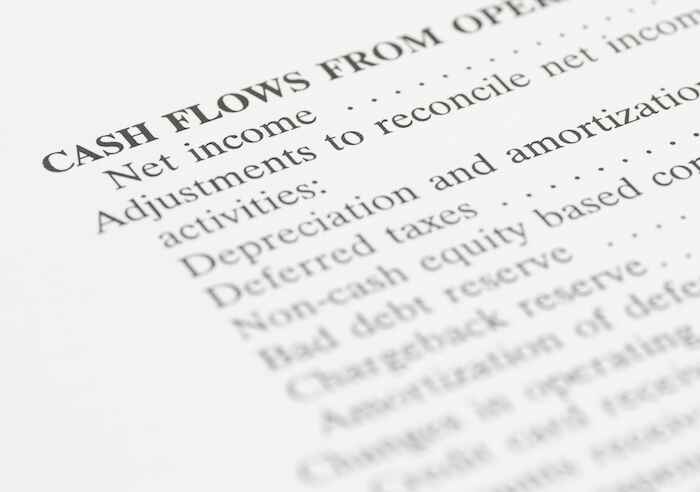Four Tools Every Trader Needs In The Stock Market
Andy Snyder|September 18, 2020
Hey, Hey. Welcome to another fun episode. I think this one could really make you a lot of money. If you’re a new investor, if you haven’t really started trading, but you said you want to, please pay attention. What I’m about to show you could get you well on your way to making a lot of money and making those first few pivotal investments. Before we get there, of course, make sure you hit that like button and subscribe to the channel, so you get updates on my next videos. Every time I upload a new one, you’ll be notified. All right. Let’s get to it. I’m just off the heels of my super trader rally. Maybe you heard about it. We had about 50,000 people sign up to join us for this rally, where basically my goal was to show people from beginning to end, how to start investing and how to make some money using a tried and true system that I tested out, saw phenomenal results.
During the, I guess, the buildup to that event, I got a lot of emails from readers, from my own subscribers folks saying, “Hey, listen. I want to do this, but I don’t know where to start. I’ve never made a trade. I’ve never done any of this.” I’ve put together in this video, a list of tools that every new investor needs to have to get started. I’m going to share those with you today. They’re very simple, very easy. If you get these four tools in your tool chest, you’ll be well on your way. Let’s get to it. Very first thing you need is some sort of strategy. The worst thing you can do is just invest Willy nilly based on the headlines, read the Wall Street Journal and see this stock is doing this, read CNBC and see that this stock is doing that.
That does not work. That will confuse you. It will get you into a storm of stock investing and strategies, not good. Pick a strategy, try it out. If it works great, keep doing it. If it doesn’t, move on. That’s the key. Pick that strategy know when you’re going to buy, what kind of stocks you want to buy, when you’re going to sell. That’s absolutely critical. I recommend just use it at 25% trailing stop. Just start there and then I’ll share it with you on my computer. You need to get into some sort of screener where you can put that strategy to work. Let me show you that now. Okay. Now I’m sharing my screen. You can see I’ve got a sign up called Finviz, but there’s a lot of sites like this. I’m going to show you a Finviz and a couple other ones.
Basically, this is where we go to start looking for the stocks that meet our criteria. As I mentioned, we have to have a set criteria. Maybe we’re looking for specific types of value stocks or growth, or we’re looking for technology stocks and it had sales that doubled over the last two years. Whatever our criteria is, technical and fundamental, whatever, we now need to go into the market and search for these. A screener from Finvis, Yahoo finance or Stock Charts can get that job done. It’s really simple to use. Again, you go into Finviz, you just click around and you can see the screener here, click that guy, and you can pick all sorts of different screeners that are pre-saved and ready to go. Yahoo finance is a very basic one, very simple, but a lot easier to use.
You can see, you can look at fair value, look at stocks based on how they move the day before, most active. That’s an interesting one for volume traders. I’m a big fan of volume, small cap, mutual funds. Then you even get down here to looking for different mutual funds and that sort of thing. You can click all around through here and figure out exactly what it is. This equity screener is probably where you’re going to spend most of your time, because it’s much more customizable. You can see, you can pick a mid cap. We can add different sectors to it. We can just go through there and add all of our criteria. That’s key. This is the second tool that you need. The third tool that we need is absolutely crucial. Fortunately, it’s pretty simple. Back in the day, we used to, to buy a stock and you had to call up a broker say, “Hey, I want to buy shares of XYZ.”
They’d set up the trade. They’d confirm it. Might get some shares in the mail, some certificates in the mail in a week or two. That was the old days. Today, you can go online and within five minutes, you can make a commission free trade at any number of brokerages. I filmed several videos on this. They’re very popular. I went through and I ranked which brokers are my favorite, which are the best features and worst features in each, which one fits the various types of investors. If you’re a beginner, you might like this one. If you’re an advanced trader, you might like this one. Check out that video, pick a broker and really sign up and get to it. That’s it. If you can create a Gmail account, if you have the computer skills and you don’t need a whole lot to set up an email account, you can absolutely set up a brokerage account.
It’s easy. It takes 10 minutes. There’s a couple more steps in setting up an email account, but go do it. I hear from people all the time that don’t know where to start with a broker, just do it. Okay. Then we get into probably what is the most overlooked, but I’d say outside of actually making the trade, this is the most important part of it. We’ve got to track the trade, see what’s doing well and what’s not. At the beginning, I talked about having a strategy, sticking with the strategy, testing it out, seeing if it works and moving on if it doesn’t and sticking with it, if it does. How can we do any of that? If we’re not accurately tracking our results and looking back at them regularly. That’s where having just a simple, an Excel spreadsheet with your trades becomes so important, but so many people overlook this.
They rely on their brokers trading account, which doesn’t give them all the details about what screens are using, what strategies they’re using. Let me show you just a real quick and dirty version of a sample spreadsheet that anybody can use that will contain all the information that you need to get started tracking your traits. Let me share my screen here again with you. You can see this spreadsheet is super simple. I’ve got the symbol, of course, your entry price, your entry date, your exit limit. Remember I mentioned, you have your exit strategy in mind. You can do a 25% trailing stop. You can do a hard limit. You got to have your exit strategy in there to be able to track whether your exit strategy is getting you out when it should. I might be getting you out too early, might be getting you out too late, but you need to track that, so you can know.
Your quantity of shares, that’s important. Not crucial to your overall strategy, but it’s important to see what you have at risk, whether you play options, your sell price, and how that corresponds to your exit limit, and of course your overall gain. Over here on the right, this is where the real meat is, and where I say that the big money is made. You need to know what strategy you use to get into these. maybe you use the volume screener to get into a stock. You look for a big volume spike. Again, my favorite trading strategy is looking for big volume, whether it’s insiders, whether it’s hedge funds, big block trades buying, look for a volume spike and get in. Maybe that’s what we did on these, these first two trades and then Ameritrade. Maybe it was an earnings trade.
They’ve been having a great earnings reports, very robust signups for Ameritrade. Maybe that’s how we got into this one. Then maybe we’re using our proprietary KPI channel trades for the oil ETF. Then we add our strategy that we use, and then some notes about, we bought at the bottom here using this strategy. What worked, what didn’t. Again, the more detailed notes you take, the more you can look back on this and really learn from it. That’s it. There’s really just four tools that we need to get started and get started trading effectively. That’s the key. We need to have a good strategy. We need to be able to screen for that tragic. Of course, we need a good broker to make those trades and then most important.
We need to go back and revisit that strategy. See what’s working and what’s not. Hey, if you want more tips like this, go click on the link below and sign up for my free daily digest, Manward Digests. We talk about trading. We talk about the markets and everything that’s important. It’s free, entirely free. Check it out and thanks for watching. I’ll see you next time.





